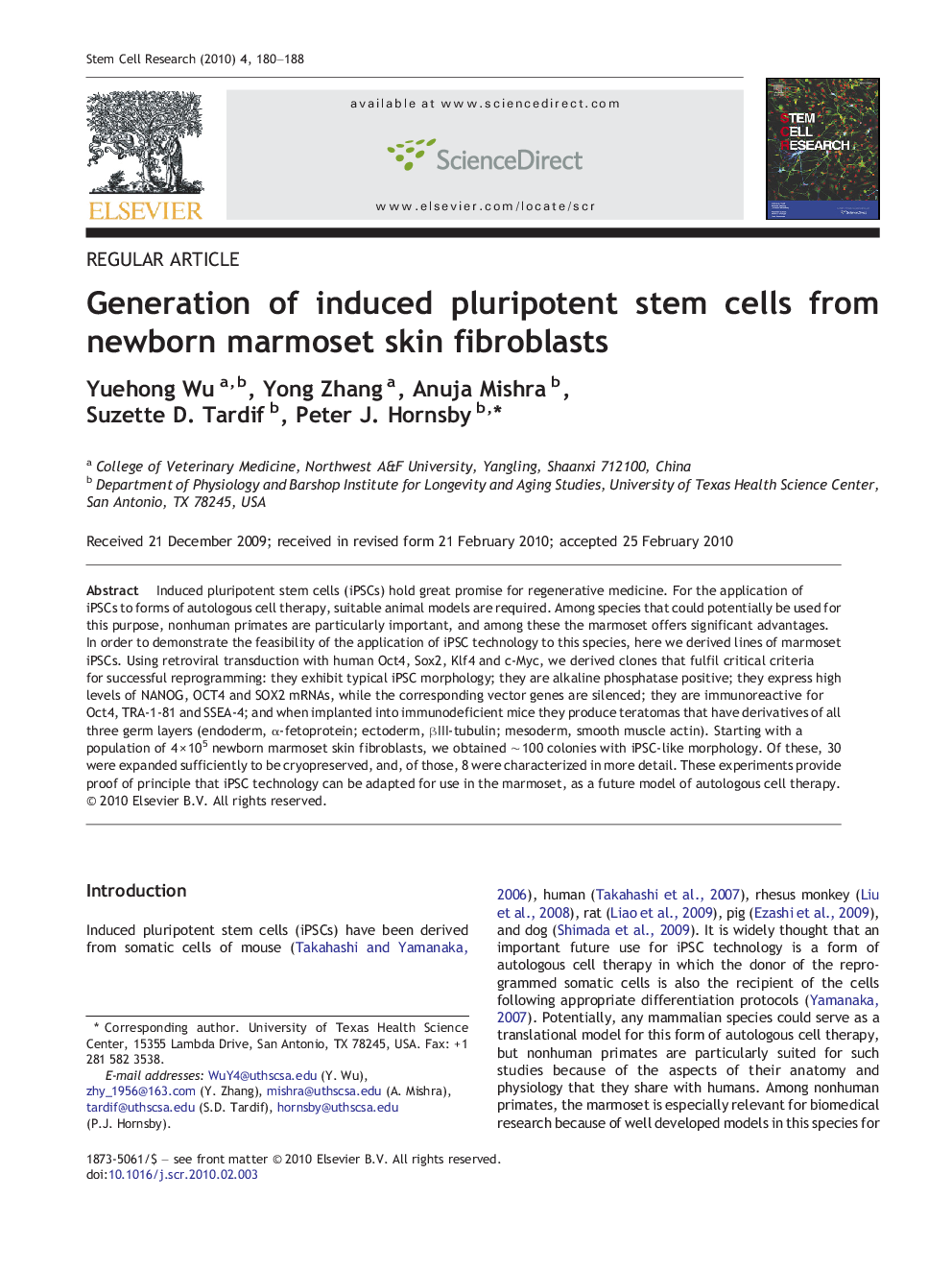| Article ID | Journal | Published Year | Pages | File Type |
|---|---|---|---|---|
| 10891377 | Stem Cell Research | 2010 | 9 Pages |
Abstract
Induced pluripotent stem cells (iPSCs) hold great promise for regenerative medicine. For the application of iPSCs to forms of autologous cell therapy, suitable animal models are required. Among species that could potentially be used for this purpose, nonhuman primates are particularly important, and among these the marmoset offers significant advantages. In order to demonstrate the feasibility of the application of iPSC technology to this species, here we derived lines of marmoset iPSCs. Using retroviral transduction with human Oct4, Sox2, Klf4 and c-Myc, we derived clones that fulfil critical criteria for successful reprogramming: they exhibit typical iPSC morphology; they are alkaline phosphatase positive; they express high levels of NANOG, OCT4 and SOX2 mRNAs, while the corresponding vector genes are silenced; they are immunoreactive for Oct4, TRA-1-81 and SSEA-4; and when implanted into immunodeficient mice they produce teratomas that have derivatives of all three germ layers (endoderm, α-fetoprotein; ectoderm, βIII-tubulin; mesoderm, smooth muscle actin). Starting with a population of 4 Ã 105 newborn marmoset skin fibroblasts, we obtained â¼Â 100 colonies with iPSC-like morphology. Of these, 30 were expanded sufficiently to be cryopreserved, and, of those, 8 were characterized in more detail. These experiments provide proof of principle that iPSC technology can be adapted for use in the marmoset, as a future model of autologous cell therapy.
Related Topics
Life Sciences
Biochemistry, Genetics and Molecular Biology
Biotechnology
Authors
Yuehong Wu, Yong Zhang, Anuja Mishra, Suzette D. Tardif, Peter J. Hornsby,
